Low-Altitude Penetration and Electronic Warfare: Stuck on Denial, Part III
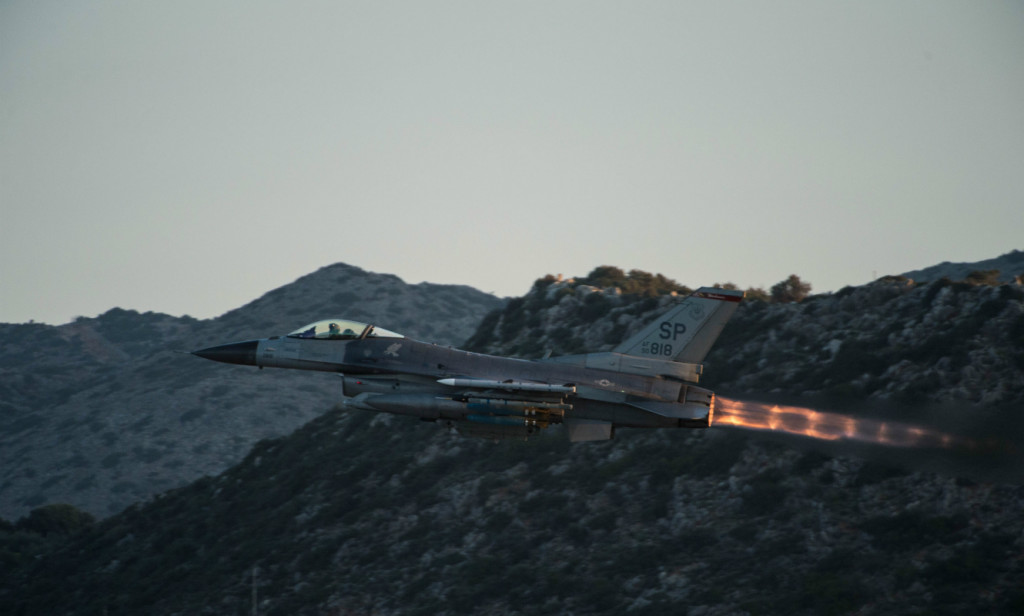
Desert Storm remains the benchmark for a modern air campaign. In 40 days, a diverse assembly of coalition airpower managed to shatter one of the world’s largest military establishments, paving the way for the mere 100 hours it took ground forces to eject the Iraqi military from Kuwait. The air campaign was preceded by the most effective defense suppression effort ever, dismantling the Iraqi air defense system in 72 hours. In the aftermath of this successful campaign, the Air Force doubled down on its commitment to electronic warfare, fielding replacements for the aging F-4G Wild Weasel and moving the mission systems from the EF-111A into a new airframe. The Wild Weasel school, scheduled for closure, was revitalized and staffed with a talented cadre possessing recent combat experience. By 1996, the Air Force had demonstrated that it recognized the reasons for its recent success and prepared itself for the advanced air defense developments sure to follow the unambiguously decisive use of airpower in the Gulf.
No it didn’t.
What really happened was that the Air Force dismantled a wildly successful “Electronic Combat triad,” consisting of the EF-111A, the F-4G, and the EC-130. The EF-111A Raven was an unarmed conversion of the F-111 fighter-bomber capable of jamming air defense radars. The F-4G Wild Weasel was the last of the Air Force Phantom conversions, intended to hunt down and kill radar-directed missile batteries and guns. And the EC-130 Compass Call was a powerful communications jammer. Not a single aircraft was lost to a radar threat in the Gulf War while an armed F-4G Wild Weasel or an EF-111 Raven was on station. F-4Gs alone fired a thousand anti-radiation missiles and took down over 250 radars, a hit rate unequaled before or since.
None of that mattered. Lured by the false promise of stealth aircraft, the F-4G and EF-111A were retired with no replacements. The EC-130 Compass Call fleet was downsized. The Wild Weasel school was closed and the decades of hard-won combat experience stored in the Suppression of Enemy Air Defenses (SEAD) community scattered to the wind. The Air Force placed all its chips on the Joint Strike Fighter and held tight to a vanishing mirage, even as the F-35’s costs spiraled and its initial operating capability date stretched further into the future. Worse yet, the Russian and Chinese systems designed to beat the F-35 have been fielded already, before the F-35 fully enters service. The Air Force has not only lost the capability to penetrate well-defended airspace with strike aircraft — with the loss of its electronic warfare expertise, it has lost the capability to know that it has lost the capability to penetrate well-defended airspace. If the United States is to continue to rely on airpower as a credible contributor to national defense, we will have to re-learn how to open a path for strike aircraft using tried and true methods.
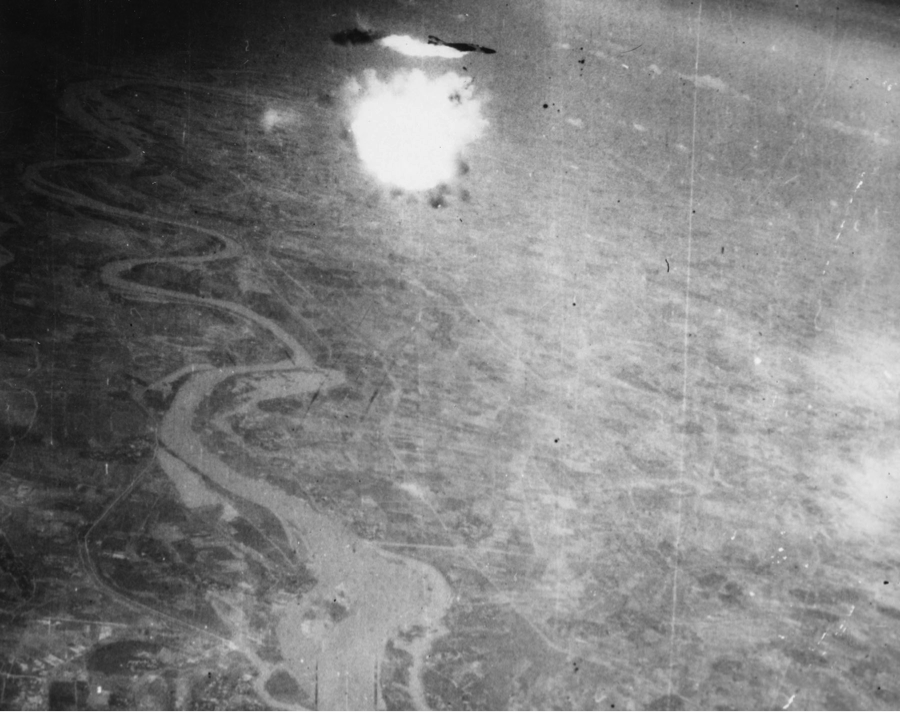
History
The North Vietnamese had established air superiority with ground to air missiles … I suppose it was a deficiency of tactical thinking that this hadn’t been considered before.
March 1965 saw the beginning of Operation Rolling Thunder, a gradually escalating air campaign against a limited target set in Vietnam. Vietnam was almost the ideal venue for the application of airpower; Hanoi had been operating its only fighter (the Korean-vintage MiG-17) for less than a year. It possessed some 50 air defense radars, but they were backed up by antiquated anti-aircraft artillery incapable of reaching high-flying jets. The obvious implication was that America’s fast jets could be used to apply effective military force with relatively low risk.
That impression changed on July 24, 1965, when a Soviet-supplied radar-guided SA-2 GUIDELINE surface-to-air missile (SAM) ripped Leopard 02 (an Air Force F-4C [63-7599]) out of the air 40 miles west of Hanoi. The next day, the same system bagged a reconnaissance drone flying at 59,000 feet. The Vietnamese had brought into service an air defense system against which U.S. fighters had no defense. The Air Force should have seen this coming. The SA-2 had been fielded in 1957; in 1960, a GUIDELINE shot down Gary Powers’ U-2. In 1962, Soviet batteries on Cuba had likewise shot down U-2 aircraft on more than one occasion. Nevertheless, the Air Force was unprepared for the introduction of the SA-2 into Vietnam.
While late, the response was legendary. The Air Force pulled electronic warfare officers (EWOs) from Strategic Air Command and paired them with experienced fighter pilots. Wild Weasel I, a two-seat F-100F specially modified for radar detection, was assembled in less than 90 days; the contract was a Polaroid photograph of the blackboard where the specs had been jotted down. On December 22, 1965, Capts. Alan Lamb and Jack Donovan achieved the first-ever SAM kill by a Wild Weasel crew, streaking in at low altitude to take the radar off the air with their four 20mm guns. Added to the radar-jamming EB-66C, the Air Force now had a substantial offensive electronic warfare capability. Wild Weasel capabilities migrated to the F-105F, F-105G, some F-4Cs, and eventually the F-4G Advanced Wild Weasel. The EB-66C was replaced by the EF-111A Raven, which was capable of penetrating defended airspace in a way the EB-66 was not. In 1982, the Air Force accepted delivery of the first EC-130H COMPASS CALL, a dedicated communications jammer designed to interrupt the radio links that stitched Soviet air defenses together. The Electronic Combat triad, or “EC triad,” was now complete.
Designed for unwrapping a Soviet air defense network, EC triad was supported by a robust training and education structure. F-4Gs and EF-111As were flown by a pilot and an Electronic Warfare Officer (EWO) — an aviator who received all of the training necessary to crew the back seat and capped it off with Electronic Warfare school. In the F-4G, both crew were graduates of the Wild Weasel school — a specialized program often open only to experienced pilots (although “baby EWOs” were admitted). The Weasel crews had access to extensive training ranges that included simulated adversary SAM systems run by highly trained operators. Green Flag exercises were the EW version of Red Flag, with all of the latter’s complexity, but with radar and communications jamming incorporated. The EF-111A, F-4G and EC-130H crews were well versed in “red” and “gray” radars, their capabilities, tactics, and the unique national characteristics of adversary air defense systems. Their success in Desert Storm capped over 25 years of investment in training, personnel, and hardware; it was a key contributor to the resounding success of the air campaign. It is that kind of deeply embedded defense suppression that the Air Force must restore.
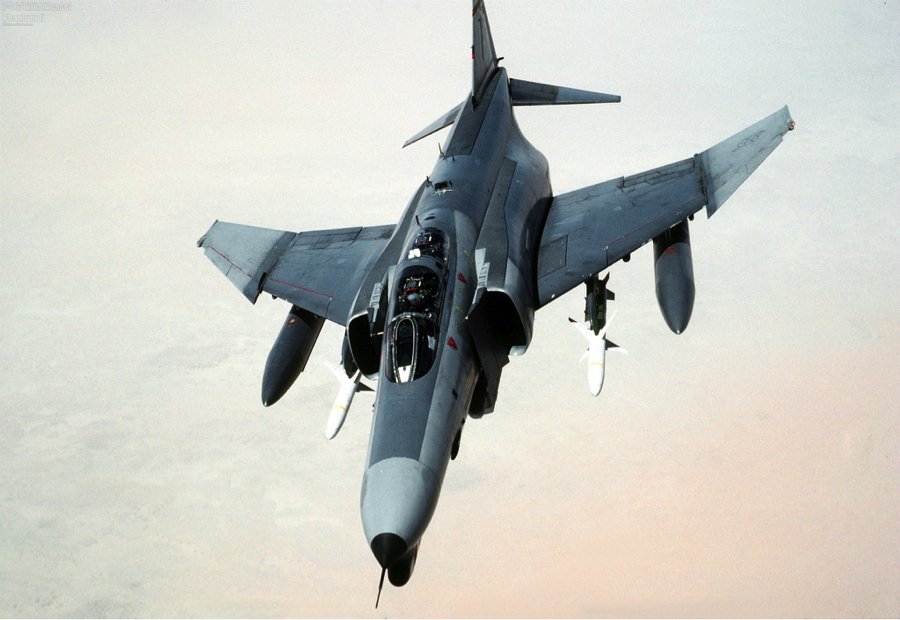
The Environment Today
Since the Gulf War, the air defense environment has changed radically. The F-117A was able to slip relatively easily through an Iraqi air defense consisting largely of Soviet systems that had been fielded between 1955 and 1970. The F-117’s stealthy design was theoretical for everybody except the United States; the materials science and the flight control capabilities that were required to pull it off existed only in the United States. But once the United States showed its hand, Russian and Chinese scientists knew exactly what we had done and why — and set about trying to counter it. They understood the physics as well as anyone; by shifting the frequency of their radars downward, they could negate a great deal of the U.S. advantage in radar stealth. In 1985, before the F-117 was officially unveiled, the CIA published a top secret (since declassified and released) special national intelligence estimate, Soviet Reactions to Stealth, that called it exactly right:
Lower Frequency Radars (that is, VHF) are more effective against low radar cross section targets because the radar wavelength approaches the length of the platform. … The Soviets have a new VHF early warning radar, the TALL RACK, under development. We expect this system, which has an antenna mast 30 meters high, to be effective against low radar cross section vehicles operating at both high and low altitudes.

In 1991, there were five Soviet surveillance radar systems (and their Chinese variants) that operated in the VHF (very high frequency) band and one that operated in UHF (ultra high frequency). Only two had been sold outside the Warsaw Pact. Today, the Russians and Chinese alone have built at least 20 different land-based systems operating in the lower-frequency bands, some of which have been exported. Since 1991, the Russians have fielded a number of advanced VHF-band surveillance radars to complement or replace the widely deployed vintage SPOON REST series — the radar used to track the F-117 prior to its shootdown over Serbia. Also operational in the VHF band are the Chinese Type 408C, JY-27 and YLC-8, and the JY-26, which was rolled out in 2014. Another dozen Chinese or Russian designs operate in UHF and L bands. The Iranians have built an early warning network using modern HF radars operating even below the VHF band at around 28MHz.
To make matters worse, the majority of these radars are mobile, rendering them easy to disperse and difficult to target. Likewise, the average modern SAM is also highly mobile, capable of engaging multiple targets at a time, an in some cases possesses missiles that travel at hypersonic speeds. Long-range SAM systems are protected by short-range SAMs, which themselves may be defended by close-in weapons systems. Aside from radar, passive detection systems are becoming cheaper and better. You can buy a longwave thermal camera for your iPhone; Chinese scientists are exploring multispectral target detection techniques for the exhaust plume emitted by jet aircraft. Combined with the neglect of Air Force electronic warfare capabilities, in almost every respect the relative air defense environment is worse for the United States that it was 25 years ago. To add insult to injury, China has recognized the value of specialized SAM-killers and is developing their own dedicated Wild Weasel program.
The principal finding of the study is particularly sobering: At a time when the United States relies on information superiority on the battlefield for future military success, this capability is jeopardized by serious deficiencies in U.S. electronic warfare (EW) capabilities.
Back to the Future
The combination of threat development, neglect of electronic warfare and an overcommittment to stealth should throw the Air Force’s ability to penetrate well-defended airspace into question. There is a way for the Air Force to regain its penetration capability, but it will require recognition that the all-stealth philosophy has been technologically outmaneuvered. The Air Force cannot spend its way out of this problem with the F-35; the aircraft’s design parameters were designed for a less-advanced threat environment that has instead outstripped the JSF’s development. Instead of putting the entire tactical airpower portfolio at the mercy of one aircraft, the service should make an effort to restore long-dormant capabilities and re-invest in readiness, training, and electronic warfare. The Air Force should buy back its EC triad and recommit to low-altitude operations.
Low altitude is the obvious sanctuary against terrestrial radar. With rare exceptions, radar is a line-of-sight sensor methodology — if an object is over the radar horizon or behind an obstacle, radar can’t reach it and therefore cannot see it. The same is true for optical sensors, including visible light, infrared or ultraviolet light. Low altitude has traditionally been a haven from early detection, since long before the advent of stealth. Low-altitude routes are planned meticulously to avoid detection when possible and minimize exposure otherwise. A jet at a typical tactical airspeed of 480 knots can cross a two-mile gap between hills in a mere 15 seconds.
Vietnam gave low-altitude flight a bad name; over 80 percent of the fast jet losses in Vietnam were to antiaircraft fire, which is notably more effective at low altitude. As the air defense threat posed by the Warsaw Pact advanced, low-altitude operations remained the “go to” tactic for surviving. In Desert Storm, coalition aircraft defaulted to medium-altitude flight, but only after the Iraqi radar threat had been effectively suppressed. The Red Flag exercises at Nellis Air Force Base are conducted in a simulated threat environment as dense as possible; the low-altitude ingress is effective despite the limited approach corridors in constant use for over 40 years. With a hill between the aircraft and the sensor, it doesn’t matter what the aircraft’s radar cross section is. It doesn’t matter if the aircraft sports a pair of afterburning turbofans. What does matter is that the aircraft in question can carry external ordnance to its aluminum heart’s content — enough to make it a very lethal predator indeed.
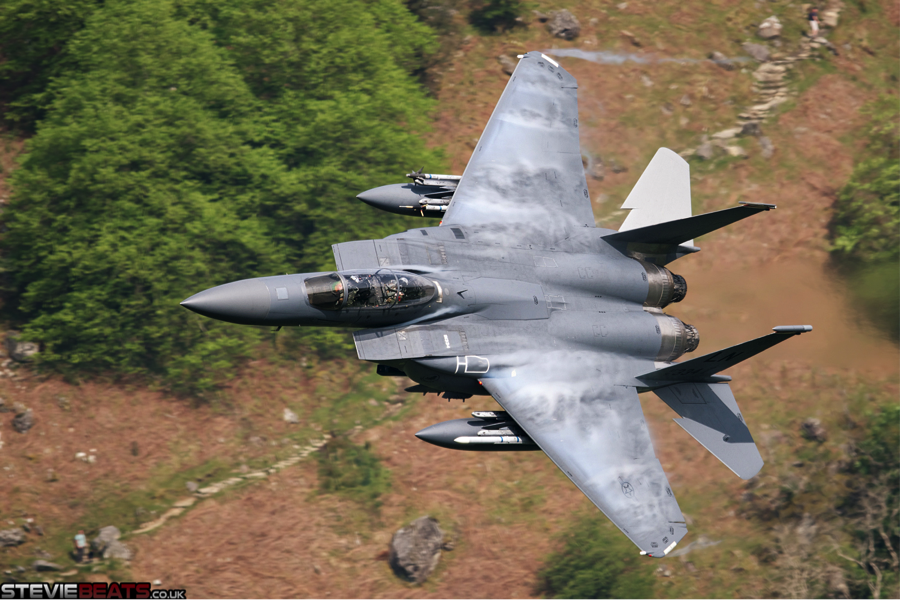
As for the EC triad, only two short legs remain. The EC-130H remains, but in a reduced number of airframes. The Block 50 F-16CM retains the SEAD mission, but the F-16 was intended only as an “interim solution” SEAD aircraft — and the people who made that decision failed to distinguish between the equipment needed to kill SAMs and the equipment needed to fire HARMs. The F-16 got the latter. In Operation Allied Force, three years after the retirement of the F-4G, the F-16s were unable to match the F-4G’s performance in Desert Storm; F-15Es killed more SAMs than any other aircraft type, but Serbian SAMs remained a threat from the first night to the last.
The Navy has already re-hosted the Vietnam-era EA-6B’s electronics into the EA-18G Growler, a modified F-18F Super Hornet. The Growler took the ALQ-99 jamming system common to the EF-111A and EA-6B and installed it in a strike fighter airframe, thereby retaining the Super Hornet’s air-to-air and air-to-ground capabilities. The obvious analog for the Air Force is to accomplish the same task with the F-15E airframe, assembled in the same factory complex as the Growler. The long-defunct Follow-on Wild Weasel program would have used the F-15G as a direct follow-on to the F-4G; McDonnell Douglas tested conformal antenna array installation on the F-15E in a program called Headhunter. Like the EA-18G, the F-15G Strike Weasel could perform either nonlethal jamming (with jamming pods on board) or more lethal suppression with anti-radiation missiles or other ordnance. Unlike the EA-18G, the F-15E has a history of killing SAMs with weapons that pack considerably more punch than the AGM-88 HARM.
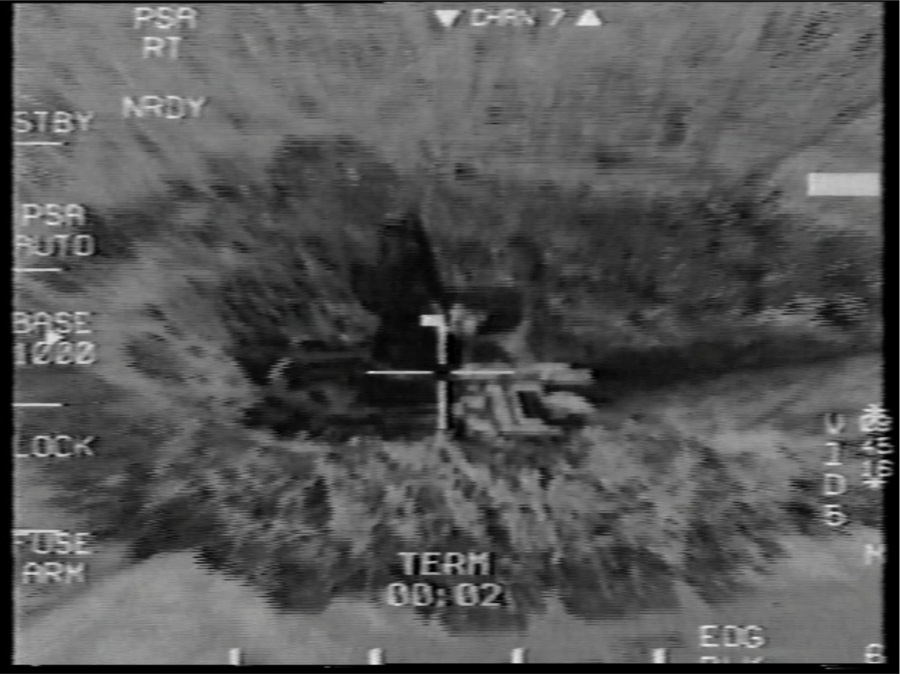
Special Challenges
The obvious challenge of weaseling at low altitude is that the line-of-sight barrier works both ways. If the radar can’t see an aircraft, that aircraft can’t see the radar. Traditionally, the way to solve this problem was to pop up long enough to locate the radar before ducking down behind a ridge for the shot — an anti-radiation missile flies an up-and-over profile to get where it’s going. In an emissions control environment, it is no longer reasonable to expect to pop up and detect a bunch of radars. The technique for dealing with this environment is not for the timid. Called “trolling for SAMs,” it means that the Weasel crew exposes themselves long enough to entice the radar operators to turn their system on. Once the radar is located, the Weasel ducks down for the shot. This technique works well for SAM systems that have to maintain a direct line of sight to the target. For advanced missiles like the Russian 9M96E that host their own active radar, it may be a catastrophically bad idea.
Enter the periscope. The past decade has seen a proliferation of air-launched parasite aircraft that might be carried by fighters. The most widely discussed is the miniature air-launched decoy (MALD), which is designed to look like a fast jet to adversary sensors. A MALD launched from a low-altitude aircraft could carry a sensor package that would do the detection job for a fighter at low altitude while simultaneously allowing the fighter to remain low. Destruction of the MALD would expose the launching SAM to counterattack, while an unengaged MALD remains an effective sensor. As long as the MALD retains line of sight to a friendly aircraft, the data it gathers could be offloaded in real time with little risk from jamming, which only affects receivers, not transmitters —and the receiving aircraft would be in terrestrial shadow against a ground-based jammer. A similar technique could be used with repurposed weapons (such as the GBU-39 Small Diameter Bomb) or air-launched swarming drones like Perdix. Support jamming, on the other hand, requires a direct line of sight to the victim, and Perdix or the jamming version of the MALD (MALD-J) could be effective while reducing the exposure of the parent aircraft.
Effective defense suppression is only a means to an end. Data from Desert Storm reveals that the vast majority of damage to aircraft occurs in the vicinity of the target. Had aircraft been able to stand off from defended targets (particularly airfields) by only 12 miles, the loss rate on interdiction and offensive counterair sorties might well have dropped to zero. Today, that standard can be met from low altitude with Small Diameter Bombs, winged JDAM glide bombers, or even the venerable AGM-130 Maverick. Point defenses are likely to wreak havoc with glide munitions, rendering electronic warfare support and large salvo sizes crucial to getting weapons on target. Here, the aluminum jets have a huge advantage as well: An F-15E can carry 20 GBU-39 Small Diameter Bombs, four AMRAAM air-to-air missiles, and two external fuel tanks, all compared to the F-35’s eight GBU-39s and two AMRAAMs. If the Air Force wants to deliver massed weapons on target, launching swarms of them from medium altitude is ineffective, since an enemy can see them coming a long way out.
Wrapup
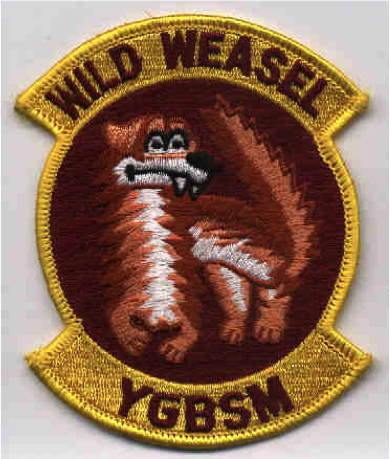
As in 1965, there is a looming problem that the Air Force should have seen coming. China and Russia have invested huge sums in the 25 years since the Gulf War to make certain that a lopsided airpower-centric victory is not within America’s reach. The defense suppression capabilities the Joint Force relied upon 25 years ago have been shattered. The military’s electronic warfare enterprise is starved of resources and expertise — the number of aviators with F-4G or EF-111A experience remaining in the service can be counted without even removing one’s shoes. Rather than chase an elusive technological solution (that our adversaries are likewise pursuing) we should be concentrating on training, readiness, and tactics, using technology only to fill in the gaps instead of searching for the silver bullet. The answers to the challenge of penetrating air defenses are within our reach; recognizing the necessity to shift emphasis and resources lags far behind the need. The Air Force has no excuse for the “deficiency in tactical thinking” that Secretary of the Air Force Brown referred to in 1965. It lacks only the will to change the existing approach — one that should be made at very low altitude.
Col. Mike “Starbaby” Pietrucha, Wild Weasel #2235, was an instructor electronic warfare officer in the F-4G Wild Weasel and was the last baby EWO to graduate from the Wild Weasel School. He later transitioned to the F-15E Strike Eagle, amassing a total of 156 combat missions and taking part in 2.5 SAM kills over 10 combat deployments. As an irregular warfare operations officer, Colonel Pietrucha has two additional combat deployments in the company of U.S. Army infantry, combat engineer, and military police units in Iraq and Afghanistan. The views expressed are those of the author and do not necessarily reflect the official policy or position of the Department of the Air Force or the U.S. Government.
Photo credit: Staff Sgt. Christopher Ruano, U.S. Air Force

